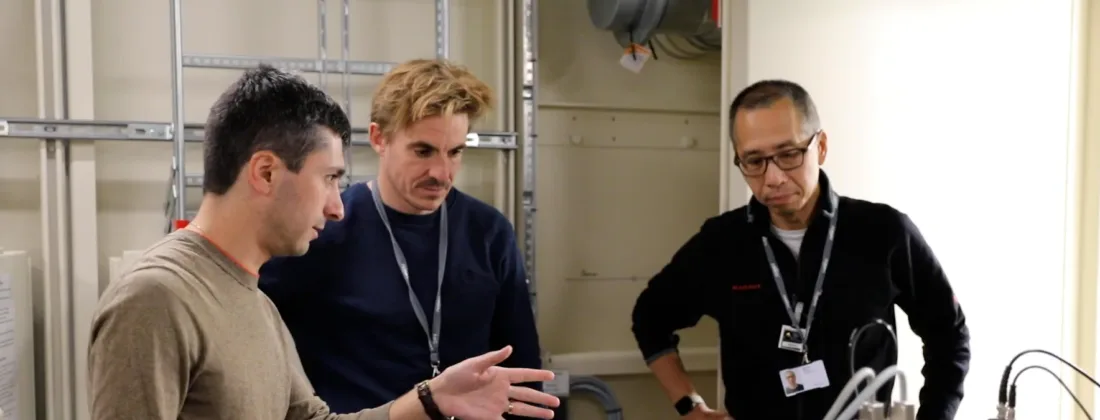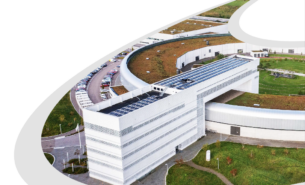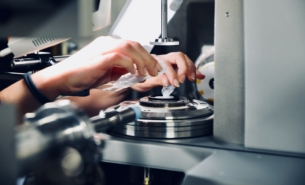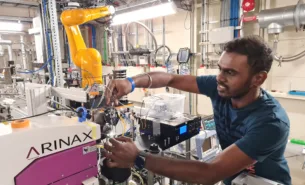A collaborative work between MAX IV and Paul Scherrer Institute researchers investigated a setup to conduct serial and time-resolved macromolecular crystallography at MAX IV. The experiment shows that the setup, based on JUNGFRAU detector and Jungfraujoch data-acquisition system, can provide a molecular moving picture of up to 500 microseconds in resolution of protein dynamics – providing ten times finer details than the previously available method. The setup is in the works to be made available at MicroMAX beamline.
With the rise of time-resolved macromolecular crystallography, and to reap the full potential of 4th generation synchrotron source like MAX IV, the team aimed to work out a setup that makes it possible to follow through proteins’ processes and dynamics, make it possible for a new chapter of structural biology, including ultra-high-throughput screening, serial crystallography structure determination of true microcrystals, and especially time-resolved MX. This can, for example, help scientists to understand thoroughly, among others, how new medication designs work.
At BioMAX beamline, the team set up the PSI-developed adaptive-gain charge-integrating JUNGFRAU detector, Jungfraujoch server for detector control and data readout, and used the beamline-control software MXCuBE3 for sample centering and data acquisition.
Using lysozyme microcrystals and the light-driven sodium-pump membrane protein KR2, the team acquired a complete, high-quality X-ray dataset with 1ms time resolution. “We can now peek into finer details of how proteins work. This is important, as dynamics has been an elusive part of science so far. We have a lot of static pictures of proteins in equilibrium, but we still don’t know much about how they behave when going from one state to the other, “explained Filip Leonarski, principal investigator.
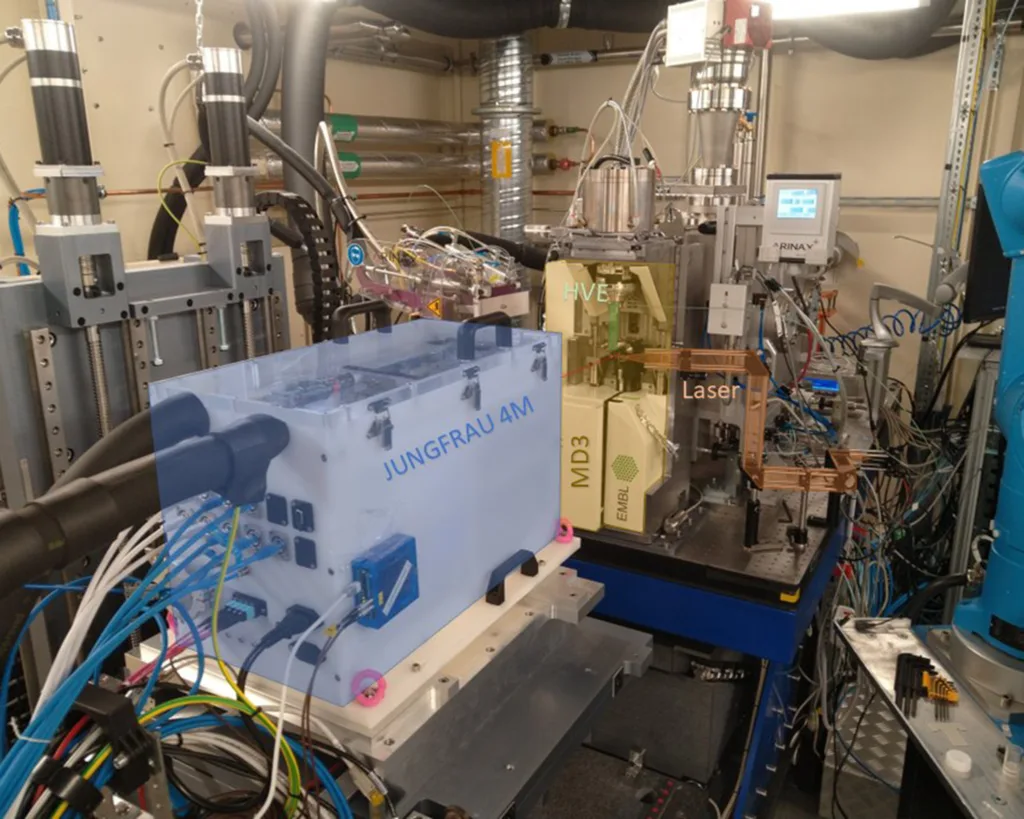
Enormous data influx
To take advantage of the full potential of the setup, researchers had to operate their X-ray camera at a very high space, up to two thousand images per second, to capture the full mobility of the sample. Consequently, a considerable amount of data influx of 16GB/second was challenging to manage. “To solve this issue, we had to use a very specialized computer, with so-called smart network cards, to help the computer processor handle such high data influx. The experiment was preceded with more than one year of regular meetings between PSI and MAX IV teams to address this challenge.”
The collaboration will continue in 2024 to make the functionality available to MAX IV users at the Micromax beamline.
Watch our short video interview with the scientist:
